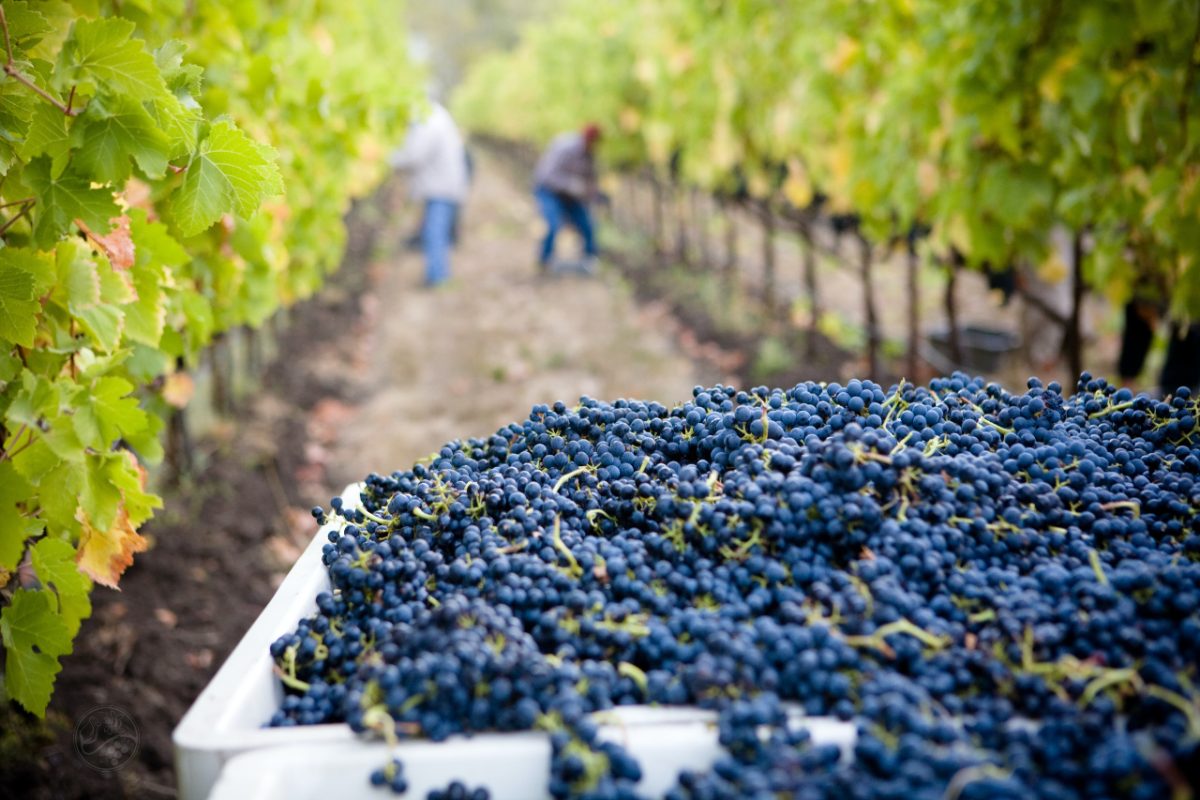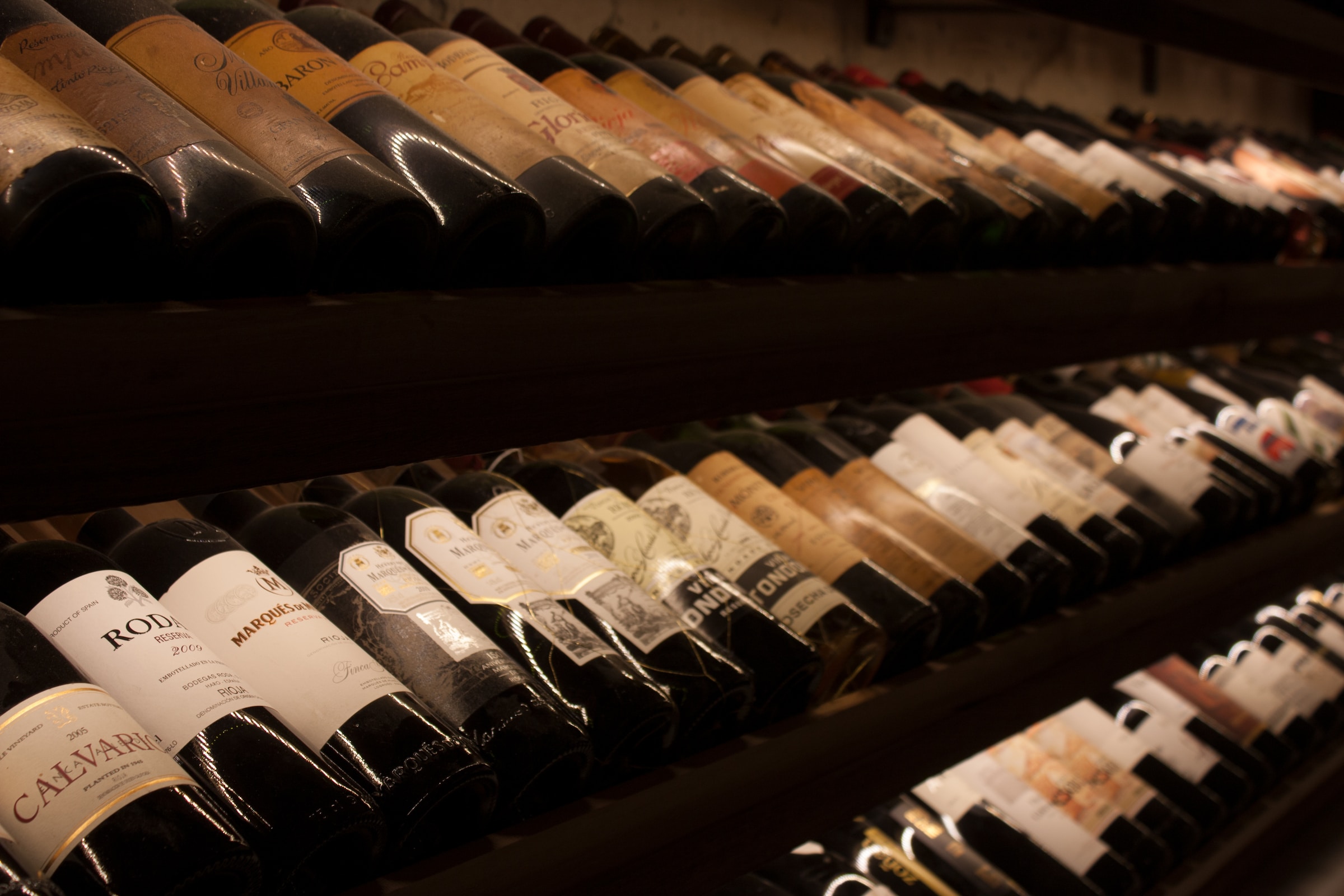
What does it cost to make a bottle of wine? A lot, quite frankly. So much is involved—from farming expenses made more extreme by climate change to dealing with the three tier system and big players strapped with cash—that it is hard to keep track of.
So, in the name of context and a better understanding of what you’re actually paying for, let’s dive in. When you buy a bottle of wine, you’re not just buying fermented fruit in a bottle. You’re buying a product that rides on the shoulders of many (actual people and facets), with a price that tries to take all of that into account.
Let’s talk about what really goes into a bottle of wine.
Grape costs and farming

Vineyards are romantic. Vineyards are beautiful. Vineyards conjure up carefree images of winemakers strolling through rows, sampling fruit in between games of fetch with the winery dog. Vineyards are also incredibly expensive and stressed more than ever by climate change, whether it be drought, new pests, or the threat of wildfires. Farming costs are also up—significant for an industry that relies on pretty much year-round agricultural care. Land is outrageously expensive, especially planted land or land in established appellations. That, and the system here, is very different from, say, France, where shared estates are more of the norm. Most young winemakers today can barely afford the tonnage fees for fruit, let alone a vineyard site. And with labor costs rising as well (keep in mind that the majority of wine grapes are picked by hand), now’s a tricky time for smaller winemakers to make ends meet.
Winemaking equipment

What does it take to actually make the stuff? Some spendy equipment, including a press that costs about as much as a car, sorting tables, fermenters, and more. Many producers rely on oak barrels to age their work, vessels that have always garnered high prices (and often have to be shipped long distances). Plus, you need a climate-controlled and rather large space to do it in, with serious drainage, power, and some helpful add-ons like forklifts, labs for testing, and the many little gadgets used in and around harvest. Winemakers have smartened up to this, collaborating in shared spaces to cheapen overall costs, but the gear, coupled with the price of fruit (easily one of the most expensive farmed goods out there), all works into the price you see on the bottle.
Distributors and retail

Selling your wine is another consideration, and it’s hard for all parties involved. The big dogs have entire sales teams and distributors all over the place to help with the case, but deals still need to be made. It’s far harder for the small producers, often forced to be their own sales team, wearing themselves thin as they attend gathering after trade gathering, trying to make inroads in the decidedly archaic three-tier system (meaning you almost always have to have a distributor to sell your wine, although Covid and such have made DTC sales somewhat easier). Many smaller producers can’t cut it in the cutthroat distributor world and go alone, selling wine through social media and wine clubs and even going as far as making doorstep deliveries to their customers. That’s a great way to secure a profit and not go wholesale with a distributor, but it’s taxing as the winemaker now dons another hat, that of the salesperson.
Marketing

As somebody with a pretty significant wine marketing background, I can attest to the difficulties in this department. Competing with the conglomerates is futile, and getting good press is sometimes a game of chance or more about who you know. The best marketing tool is direct contact with the product, and one of the most tried and true venues for that is the tasting room. However, that’s yet another sizable expense that requires staff, upkeep, etc. Any small business owner knows that marketing is part of the equation, but again, the issue here is with the small winemaker who’s already stretched thin and likely taking this additional task on themself (for better or worse).
Bottling

While larger wineries have their own bottling lines, many smaller players do not. That means shelling out at least once a year for a mobile bottling unit on top of all the pieces needed to complete the task (the glass, the cork, the caps, the labels, and the climate-controlled storage space for the wine). The price of glass alone has reportedly spiked some 20% in the last year as well, causing some to opt for different formats.
TTB approval

About those wine labels: They need TTB approval. The federal agency grants the use of labels and, therefore, sales, but not without a usual amount of hoops-jumping and delays. A standard label approval, or COLA, can come along in a month or less, but the bigger issue these days is adapting to label changes with things like nutritional info and more (a reaction to consumers wanting to know more and more about the product, which is fair). The main takeaway here is the precious time involved in working with an agency that’s likely overwhelmed and understaffed. One of the most important marketing tools of late, the American Viticultural Area AVA), is a great thing to tout on a label and has proven sales power, but getting these appellations approved is often a long, painstaking process.
Supply chain hiccups

The supply chain shortages of the 2020s have not been friendly to wine, in part because the industry is so dynamic. With so many moving parts, there’s a lot at stake that could potentially get held up. From packaging materials to the ink on the labels, there have been significant hiccups lately that result in delays or shortages that result in higher prices to compensate for lack of supply. It’s all related, and it all adds up. Gas is more, truck drivers are harder to come by, much-needed equipment can get backlogged on a barge, seasonal labor is harder to find (a huge deal during harvest and very much its own issue as these laborers have historically been underpaid and uninsured), and so on and so on.
Brutal competition

There are an estimated 12,000 wineries in the U.S. Perhaps the market is oversaturated; perhaps the top tier holds way too much influence and power. Regardless, it’s competitive out there. And it’s not even just the domestic scene. More than ever, bigger international producers are plunging into the American market, with bargain wines a lot of smaller domestic producers can’t come close to competing with.
It’s not all bad, of course, as wine continues to fascinate and wow. We have close to 300 American Viticultural Areas in the U.S. now, and there’s never been a better time to dive into the wide array of industry offerings. Just keep all of the above in mind as you think about the cost of a bottle, and not just as a restaurant where we should expect the markup.
Do it right: Support your smaller brands, buy direct when you can, and encourage them to be sustainable both in terms of land use and labor use. All while you’re at it, check out our top wine picks and wine tasting etiquette guide.


